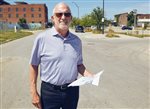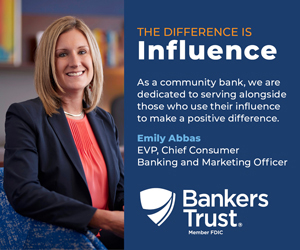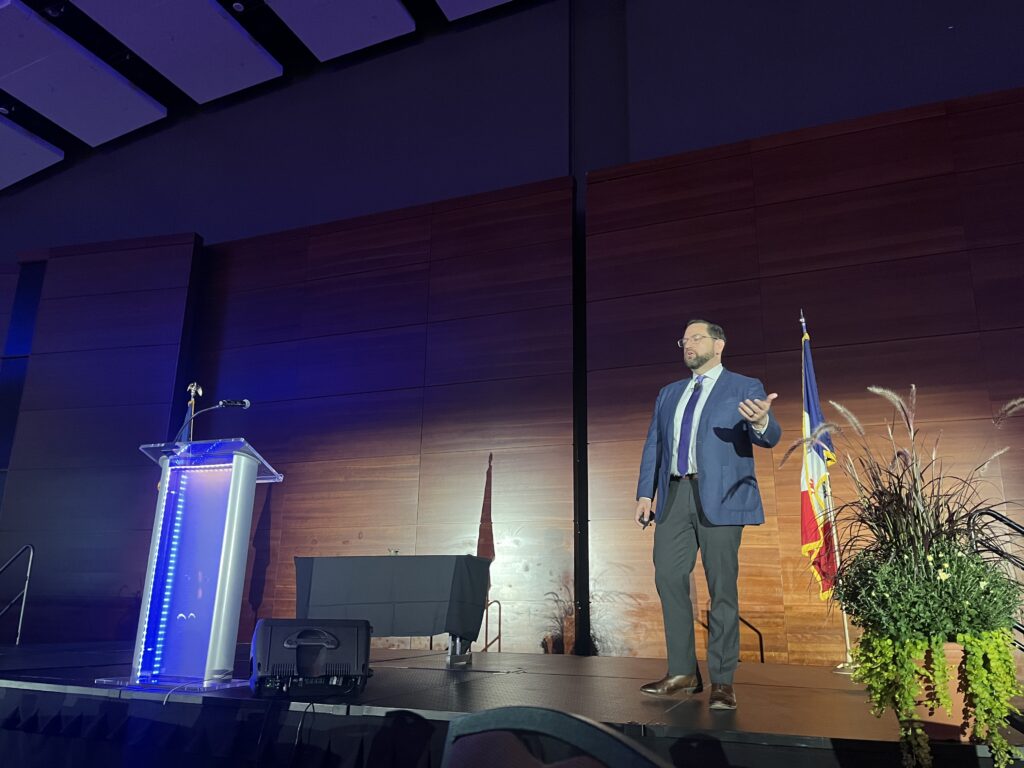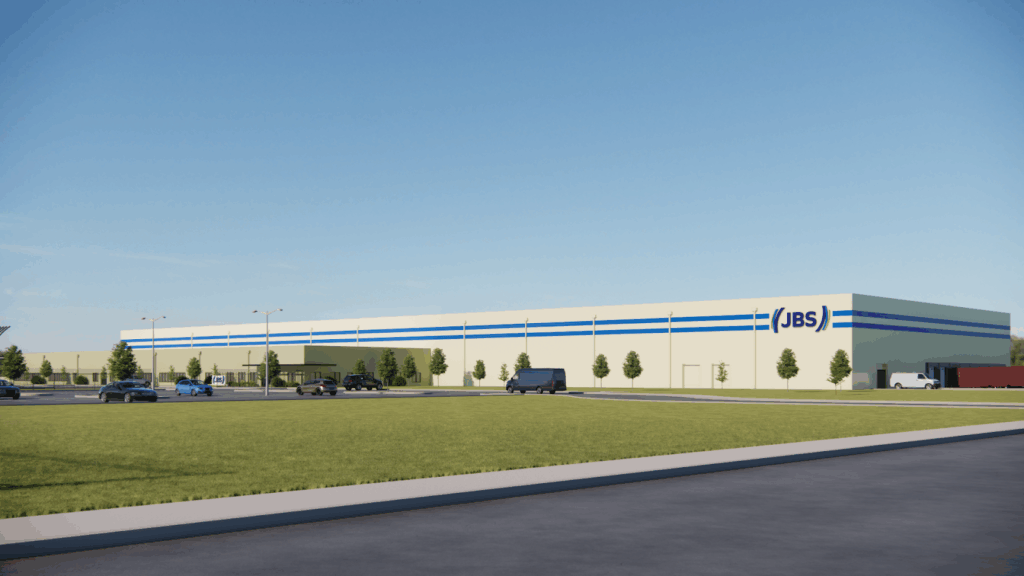Market District Update: Developers eye features that will surprise visitors

KATHY A. BOLTEN Sep 3, 2020 | 2:39 pm
6 min read time
1,395 wordsBusiness Record Insider, Real Estate and DevelopmentIn 10 years, when visitors stroll through a redeveloped area east of the Des Moines River, Paul Hayes wants them to be surprised.
“Think about the cities you like to visit,” the president of JSC Properties said recently during a tour of an area south of the railroad tracks between the river and Southeast Sixth Street.
“You walk around parts of those cities and there’s stuff to see and occasionally there’s something that surprises you. Frankly, that’s what’s going to make you want to go back to that city.”
District Developers LLC, a consortium that includes developer James Cownie’s JSC Properties, MidAmerican Energy Co. and other local developers, has proposed redeveloping 39 acres of the Market District, a 260-acre area roughly between East Court Avenue, Southeast Fourteenth Street, Scott Avenue and the river.
When completed, redevelopment of the area would include an indoor-outdoor event venue, a hotel, office space, apartments, condominiums and parking. It would also include some surprising elements.
Hayes, standing at Southeast Fourth and Market streets, pointed to a corner. “We’re planning a park-like plaza on this corner,” he said. “Think of Cowles Commons but only smaller. Maybe a couple more on [Southeast] Fifth and on Market. I think people will be surprised to find these features.”
East-west streets will be lined with trees, plants and bioswales, channels that capture rainwater and grasses, flowering herbs or other plant material in them to absorb the moisture.
“Bioswales are not something we’ve seen much of around here,” Hayes said.
Narrow streets geared to pedestrians would also be surprising to visitors, he said. “Where do we have that now? We don’t. You’re not going to have [vehicles] zooming around like you do on Grand and Locust because the streets will be narrower and, except for one or two of them, they don’t really lead to anywhere.”
Much redevelopment occurring near downtown
The Market District is Des Moines’ fifth opportunity to redevelop areas adjacent to its central business district. Others include:
The East Village, where aged buildings were repurposed or replaced with new ones, making a vibrant commercial and residential district east of the Des Moines River at the foot of the Iowa Capitol building. The area, once filled with tired and crumbling buildings, now includes boutique hotels, restaurants, bars, shops and residential living units.
Gray’s Station, an 84-acre neighborhood south of Martin Luther King Jr. Parkway between Southwest Ninth and 11th streets that when completed in 10 to 15 years will include apartments, townhouses, condominiums, single-family residences, restaurants and other businesses. The $250 million Hubbell Realty Co. development is expected to have about 1,200 residences and 3,000 to 5,000 people. The development is on the site of a former rail yard.
Gray’s Landing, an area south of ML King being developed by Sherman Associates of Minneapolis. The area, which includes a Holiday Inn Express, apartment buildings and an office building that’s under construction, previously included several industrial buildings.
The Bridge District, a $112 million development by Hubbell Realty that is under construction south of Interstate Highway 235 and east of the Des Moines River. When completed, about 1,000 people will live in the development’s 477 home sites. The area previously had included one-story warehouses and some offices.
“These types of developments are once-in-a-lifetime opportunities and you shouldn’t sell them short,” said Thomas Murphy, a senior fellow with Urban Land Institute, a nonprofit research and education organization based in Washington, D.C. “You need to think of things that are really great, not what you think you can afford.”
Murphy, who was mayor of Pittsburgh from 1994 to 2006, secured $1 billion in funding to construct new stadiums for the Pittsburgh Pirates (PNC Park) and Pittsburgh Steelers (Heinz Field) as well as a new convention center, according to a biography on the city’s website. Murphy was also successful in luring department stores back to the city’s downtown.
Creating top-notch new developments on previously developed areas requires strong public-private partnerships built on trust and confidence in each other’s abilities, Murphy said. City officials need to know – before being inundated with developers – how they want an area developed, he said.
“I would have developers come to my office and say, ‘We have a great idea we want to build on,’ ” Murphy said. “We would tell them, that may be a good idea for you, but we’ll decide if it’s a good idea for us.”
If proposed development ideas were exciting and something the city wanted to pursue, “we would look at it deeper but we were clear on what we expected,” Murphy said.
Before master plan completed, redevelopment underway
Pressure to redevelop the Market District, a mostly aged industrial area that straddles the railroad tracks east of the Des Moines River and south of the popular East Village, began building steam in 2016 after 12 acres of land owned by the city of Des Moines and MidAmerican Energy Co. was considered for the site of new federal courthouse.
While a different site for the courthouse was ultimately selected, city officials and others realized the need to begin fast-tracking plans to redevelop the area. A consultant was hired to study the area’s infrastructure needs and develop a master plan.
But even before the area’s master plan was completed, new development was occurring in the area. Construction of a multilevel office building was recently completed and three new apartment complexes have been built or are under construction. Investors are buying old warehouses and industrial buildings and making plans to renovate the structures.
Developer Tim Rympa, with others, in January purchased a building at 112 E. Fourth St. that once included a casket-making business. Rypma said state and federal historic tax credits are being pursued to help defray renovation costs. Preliminary ideas include a restaurant or brewery on the ground level and offices and apartments on the other levels.
“This is a natural progression of development,” said Rypma, who with others recently completed the renovation of the Edna M. Griffin Building at 319 Seventh St. and has redeveloped buildings in the East Village. “There’s really nowhere else for the city to grow.”
Last fall, the Market District’s master plan was made public. It proposed developing an area that was walkable but with an urban feel to it; providing housing options for a range of incomes; creating new places to work and recreate; and providing connections between the districts on either side of the Des Moines River. The master plan also recommended including sustainability features.
As the Market District master plan was being planned, JCS Properties and its collaborators began contemplating redevelopment of an 11-block, 39-acre tract roughly north of ML King Parkway between Southeast Sixth Street and the Des Moines River.
District Developers LLC, a consortium that includes JSC Properties, MidAmerican Energy Co., Rypma and others, was formed and is the master developer of the first phase of the Market District’s redevelopment.
A preliminary development agreement, approved by the council in June, includes the sale of city-owned land to District Developers at a fair market value minus the cost of razing city-owned buildings and environmental remediation.
District Developers would be responsible for demolishing existing buildings, conducting environment remediation, and rebuilding public streets and utilities, all of which is expected to cost more than $30 million, according to the preliminary agreement. The city would be responsible for rebuilding some segments of the streets that serve as gateways into the area.
The redevelopment of the area, to be completed in 10 to 15 years, is expected to be valued at a minimum of $245 million. The redevelopment is estimated to generate $55 million in new property tax revenue to the city over 20 years and $10 million to the school district, according to a city document.
“Des Moines has been on a great growth path since 2000,” Rypma said. “We’ve seen parking lots turned into buildings and we’ve seen this evolution of the East Village and downtown Des Moines and we have great momentum and we need to continue that in the Market District.”
RELATED ARTICLES:
In 20 years, valuation of Market District land has grown 55%
Copying a Denver success story
What’s the future of Market District’s single-family housing?
MidAmerican Energy officials mum about redevelopment of 11-acre tract
Interactive property value map











